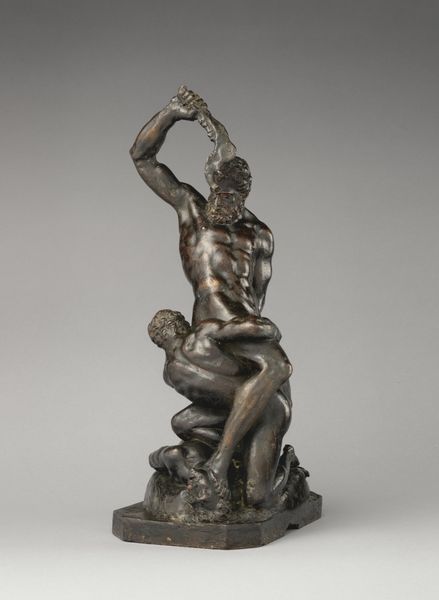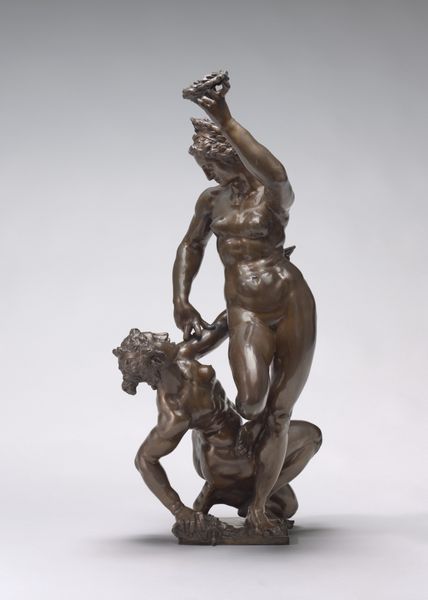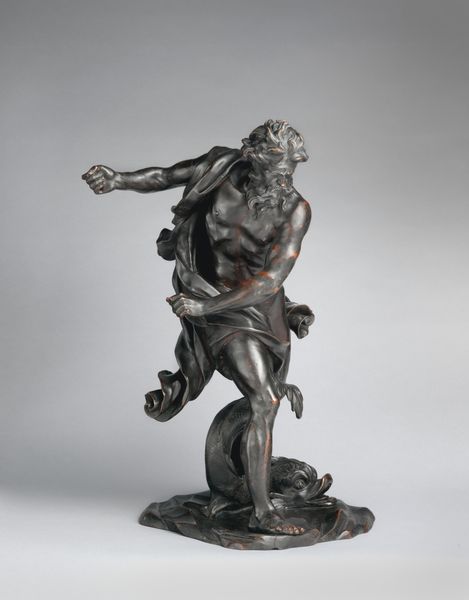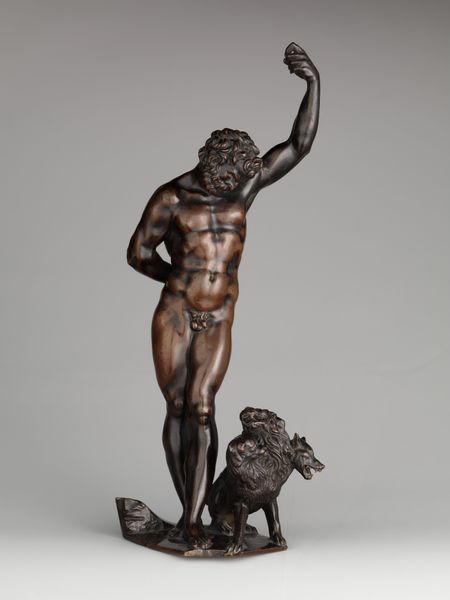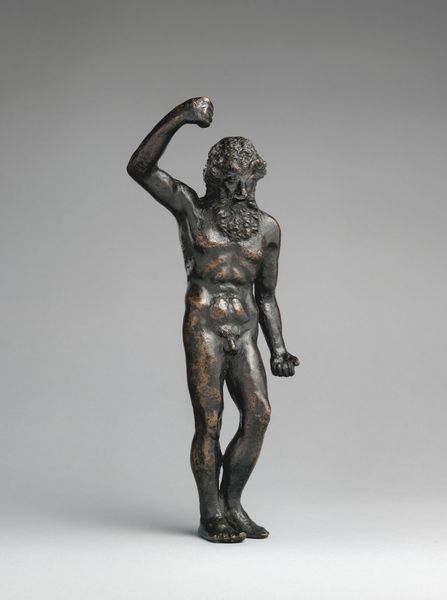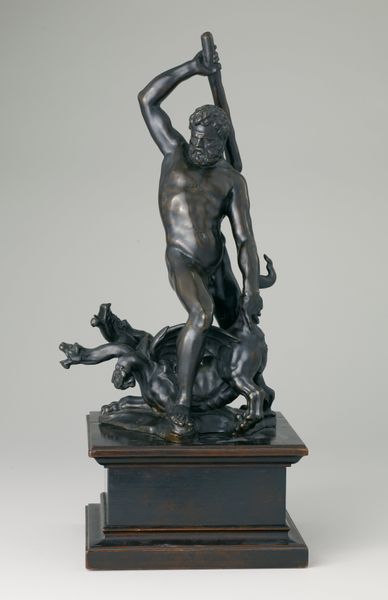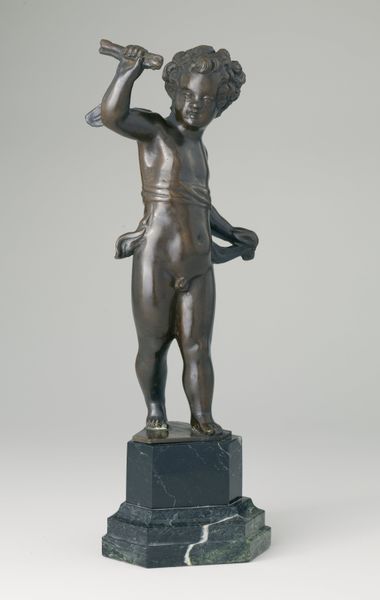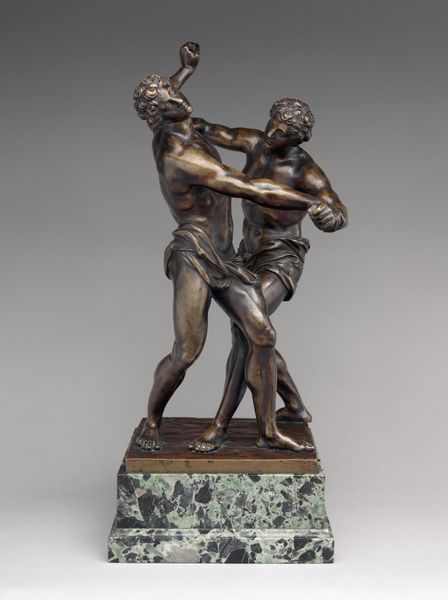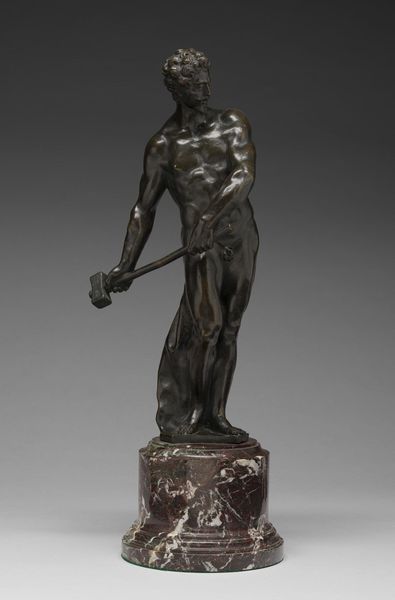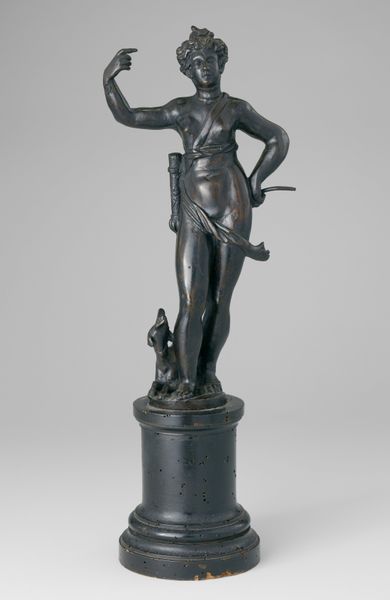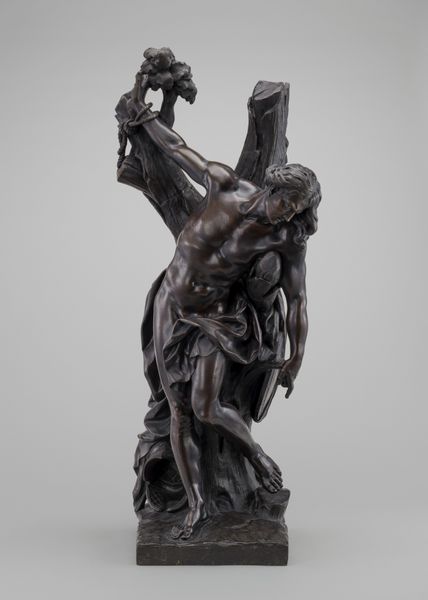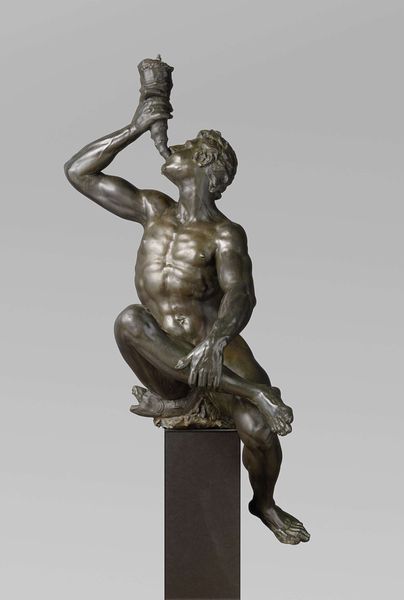
bronze, sculpture
#
germany
#
sculpture
#
bronze
#
sculptural image
#
figuration
#
sculpture
#
history-painting
#
italian-renaissance
Dimensions: 9 1/4 x 4 1/4 x 3 1/2 in. (23.5 x 10.8 x 8.89 cm)
Copyright: Public Domain
Curator: Wow, talk about power! There's an immediate sense of victory radiating off of this piece. I'm drawn in by the sinuous curves of the lion, almost inviting my hand to trace the animal's body as I study it! Editor: You're right, there's an undeniable intensity! We're looking at a bronze sculpture, "Hercules Slaying the Nemean Lion," likely made in late 15th-century Germany. It's now part of the Minneapolis Institute of Art’s collection. It so succinctly captures the hero at the exact moment of his triumph. Curator: It's so captivating how it represents a narrative that many know—but brings an independent aesthetic that distinguishes it. The positioning—the way Hercules has a hold over the lion’s head, his arm raised—there’s real dynamism! This unknown artist has really worked magic with their artmaking practice. Do you know where in Germany this may have been made? Editor: Pinpointing the exact city can be challenging due to its age and the anonymity of the maker. However, the artistic style reflects influences circulating amongst workshops producing small bronzes for wealthy patrons, tapping into the Renaissance fascination with classical antiquity in both Italianate and German visual culture of the time. Curator: Oh yes, so thinking of its public role, and its institutional position— who are these wealthy patrons purchasing something so virile? So determined and brave! And made in Bronze too! Is there an implication with the color? Editor: These bronzes, being luxury objects, were purchased for display within private collections to celebrate humanist learning through mythological allegory. Bronze signified power, permanence, and connection to antiquity, signaling the patron’s education and social standing. Think of them as potent displays of cultural and social capital for exclusive consumption. The politics of imagery—to assert oneself as cultivated in contrast to folk legends. Curator: Hmm, food for thought! It’s hard to disassociate with present day even with a work hundreds of years apart from current society. Seeing such a tangible creation fills me with appreciation for human drive. Editor: Exactly! Its story then reverberates with contemporary echoes regarding status and meaning making, reminding us how those narratives continue their resonance!
Comments
No comments
Be the first to comment and join the conversation on the ultimate creative platform.
